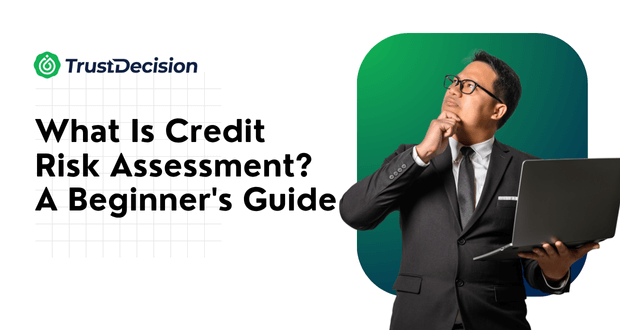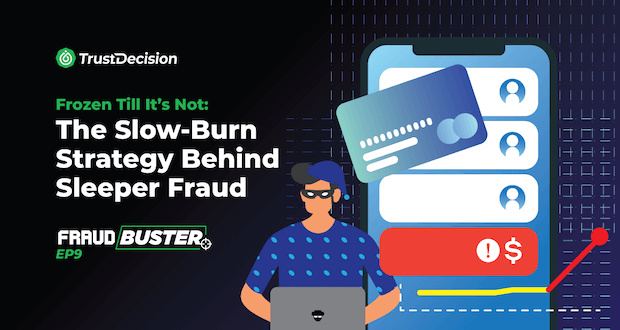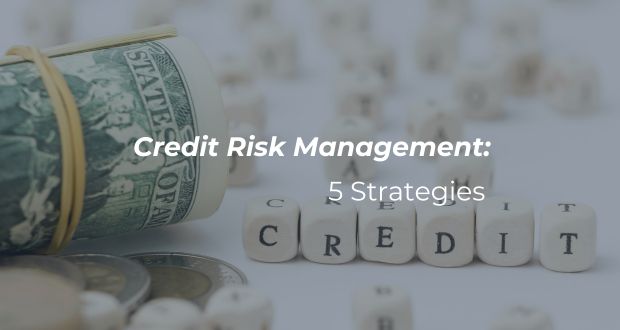Introduction
Credit risk assessment evaluates how likely a borrower—individual or business—is to default on a loan and estimates the lender's potential loss. Rather than relying solely on a credit score, it combines three core metrics—Probability of Default (PD), Exposure at Default (EAD), and Loss Given Default (LGD)—with financial ratios, behavioral signals, and market trends to produce a comprehensive risk grade.
Understanding the credit risk assessment process—from data collection and model development to validation and ongoing monitoring—is essential for building a resilient lending framework. Modern AI and alternative data sources now enable real‑time evaluations, helping lenders make smarter, faster decisions.
This guide is designed for banking professionals, credit risk managers, and fintech developers looking to understand and implement effective credit risk assessment frameworks to reduce financial exposure while scaling their lending business.
Understanding Credit Risk Assessment Process
Effective credit risk analysis builds on risk evaluation basics by creating a 360° view of each borrower by combining quantitative and qualitative inputs. This holistic risk assessment method enables lenders to price loans appropriately and allocate capital more efficiently.
They evaluate the following criteria:
- Financial Health: Examines debt‑to‑income ratios, liquidity metrics, and cash‑flow stability to gauge repayment capacity.
- Behavioral Data: Reviews payment history and transaction patterns to detect emerging stress signals.
- Market Context: Monitors interest‑rate shifts and sector volatility to adjust risk views for external conditions.
The output is a composite risk score or tier that guides decisions on whom to lend to, how much credit to extend, and on what terms.
Digital transformation is rapidly changing traditional assessment approaches, with AI and machine learning enabling more dynamic, responsive risk frameworks that can adapt to changing market conditions in real-time—a significant advancement over static, periodic review processes of the past. According to industry research, AI-powered credit models can reduce default rates while expanding customer reach, with real-time detection systems capable of analyzing billions of data points to identify patterns human analysts might miss.
What Is the Purpose of a Credit Assessment?
A credit assessment balances potential returns against expected losses. By accurately sizing risk, lenders can:
- Minimize default-related losses
- Sustain portfolio health over economic cycles
- Optimize capital allocation for profitable growth
- Meet regulatory requirements for risk management
The 3 Types of Credit Risk
Before diving into model details, it's vital to understand the dimensions of credit risk that drive scoring and decisioning. Credit risk manifests in three primary forms, each requiring tailored mitigation:
- Default Risk
The probability a borrower will fail to meet repayment obligations.
- Migration Risk
The chance that a borrower's credit quality deteriorates over time, shifting them into higher‑risk buckets.
- Concentration Risk
Exposure spikes when too much credit is concentrated in a single borrower, industry, or geography.
What Factors Affect Credit Risk?
Risk models draw on both quantitative and qualitative variables to assess and predict potential risks. Choosing the right mix—and assigning appropriate weights—ensures models remain accurate and actionable:
- Financial Ratios: Debt service coverage and liquidity help assess cushion against cash‑flow shocks.
- Macroeconomic Variables: Interest‑rate trends and unemployment rates shape default probabilities.
- Borrower Characteristics: Collateral quality, cash‑flow volatility, and business model resilience inform loss severity.
- Industry Outlook: Competitive landscape, growth prospects, and technological disruption risks.
- Corporate Governance: Board composition, internal controls, and risk‑management culture.
- Regulatory Environment: Upcoming legislation, compliance requirements, and enforcement intensity.
- Geopolitical & ESG Risks: Political stability, environmental and social governance practices, and reputational factors.
By integrating and quantifying these diverse factors, lenders can fine‑tune scorecards to reflect each borrower's true risk profile.
Risk Evaluation Basics
Building on the factors above, risk evaluation basics involve normalizing inputs, assigning weights based on historical impact, and conducting validation checks to ensure each variable reliably contributes to the final risk score. This foundation supports transparent model development and alignment with strategic risk policies.
Action tip: Review your current risk factors quarterly to ensure they still reflect market conditions and update weightings based on recent portfolio performance.
Risk Grading in Lending
Lenders translate model outputs into intuitive risk tiers—low, medium, or high—using scorecards aligned with frameworks like the Advanced Internal Ratings‑Based (A‑IRB) approach under Basel II/III capital adequacy rules for banking institutions. This standardization ensures consistency across portfolios and supports regulatory compliance.
What Is A Bad Credit Risk?
"Bad credit risk" profiles feature borrowers with low credit scores, frequent missed payments, or prior defaults. Lenders compensate by charging higher rates or requiring collateral to protect against loss.
What Is A High Credit Risk?
This profile arises from factors such as unsecured exposures, cyclical business models, or early‑stage ventures—even when repayment history is solid. Borrowers flagged for a high risk loan receive tighter covenants, lower credit limits, and closer monitoring to mitigate potential losses.
Example of Credit Risk
Consider a fashion retailer might show strong performance during holiday seasons but struggle during Q1 and Q3. A well-designed risk assessment would identify this cyclicality and implement appropriate credit structures—such as seasonal payment schedules or higher cash reserves during peak periods—to prevent default.
Why Credit Risk Assessment Matters
A robust credit risk framework is the backbone of a profitable, resilient lending operation. It enables lenders to manage losses, set fair prices, and maintain portfolio health—ultimately driving sustainable growth.
Safeguarding Capital
Effective risk assessment keeps unexpected losses within predefined limits, helping banks preserve capital buffers and meet regulatory ratios. With adequate reserves, lenders can weather economic downturns without jeopardizing solvency.
Enabling Risk‑Adjusted Pricing
When you accurately quantify borrower risk, you can align interest rates with the true likelihood of default. This "risk‑adjusted" pricing protects profit margins and ensures neither the lender nor the borrower is unfairly exposed.
With capital guarded and pricing tailored, the next imperative is preventing loans from slipping into distress.
Reducing Non‑Performing Loans (NPLs)
Early detection of elevated risk—through scorecard alerts or behavioral signals—triggers proactive interventions like loan restructuring or collateral requests. These measures help keep minor delinquencies from escalating into costly write‑offs.
Action tip: Implement automated early warning systems that flag borrowers showing signs of stress before they miss payments, creating opportunities for proactive restructuring.
Preventing losses at the individual loan level then feeds into broader portfolio optimization.
Enhancing Portfolio Quality and Profitability
By segmenting borrowers according to risk tiers, lenders can expand approvals for low‑risk applicants and apply stricter terms where justified. Coupled with AI‑driven analytics, this targeted approach accelerates decision‑making, boosts approval rates for strong candidates, and maximizes overall returns.
Core Elements of Credit Risk Analysis
At the heart of every credit decisioning model lie three intertwined metrics:
Probability of Default (PD)
Estimates the chance a borrower will default within a defined horizon, using techniques like logistic regression (a statistical method that predicts binary outcomes) or machine learning, leveraging historical data and economic indicators.
Exposure at Default (EAD)
Predicts the outstanding balance—including undrawn credit lines—at the moment of default. This "amount at risk" guides capital reserving.
Loss Given Default (LGD)
Calculates the percentage of EAD likely lost after collateral recovery and collection costs. It's commonly computed as (1 – Recovery Rate) × EAD.
How These Metrics Work Together
Expected loss combines a borrower's default probability with the loan amount at risk and the likely severity of loss to produce a single monetary estimate of average credit cost. In essence, it answers the question: "On average, how much will I lose on this exposure over a given period?"
By translating three separate dimensions of risk into one figure, lenders can:
- Price Loans Appropriately: Set interest rates high enough to cover expected credit costs.
- Allocate Capital Efficiently: Reserve sufficient buffers to absorb losses without tying up excess capital.
- Define Approval Thresholds: Determine which exposures exceed the institution's risk tolerance.
Expected Loss Formula for Better Risk Forecasting
Expected Loss = PD × EAD × LGD
For example, a loan with a 2% chance of default (PD), a $100,000 exposure at default (EAD), and a 40% loss given default (LGD) yields an expected loss of:
0.02 × $100,000 × 0.40 = $800
This $800 represents the average loss the lender anticipates per period, informing pricing, provisioning, and portfolio limits.
These metrics evolve differently across economic cycles. During recessions, PD rates typically rise sharply, while LGD may increase due to collateral value declines. In consumer lending, these metrics tend to be more standardized, while commercial lending requires more customized approaches to capture business complexity.
Combining PD, EAD, and LGD into a single expected loss metric guides loan pricing, capital buffers, and approval limits. Paired with active monitoring and expert input, this framework helps lenders manage risk effectively and sustain profitable, resilient portfolios.
With expected loss quantified, lenders turn to a structured assessment process that applies these insights across every borrower.
Credit Risk Assessment Methodologies in Banking
Banks blend rigorous, data‑driven scorecards with seasoned expert judgment to capture both quantifiable risk factors and nuanced business insights. This integrated approach ensures even novel scenarios—such as emerging sector disruptions or leadership changes—are evaluated accurately and consistently.
How Credit Risk Assessment Works in Banks
Under Basel II/III norms, banks employ a bank credit risk analysis approach—developing tailored PD, EAD, and LGD models for each portfolio segment. These quantitative outputs are then overlaid with qualitative reviews of industry dynamics, management quality, and strategic plans to form a complete risk picture.
Integrating Quantitative and Qualitative Insights
Statistical scorecards (PD, EAD, LGD) quantify default probabilities and loss exposures. Overlaying these outputs with expert assessments of industry trends, management quality, and strategic plans uncovers hidden risks and prevents misclassification of unconventional borrowers.
Bridging this gap between numbers and nuance naturally leads to segment‑specific practices, ensuring each borrower group receives tailored risk treatments.
Consumer vs. Corporate Credit Evaluation
- Consumer Lending: Relies on standardized credit‑bureau scores and automated rules for rapid, consistent decisions.
- Corporate Lending: Requires in‑depth corporate credit risk analysis—including financial‑statement scrutiny, management assessment, and sector outlook reviews—to account for operational complexity.
Despite their differences, both segments follow a common, structured assessment process that standardizes evaluation steps across the organization.
How Banks Assess Credit Risk: Process & Best Practices
1. Collect Borrower & Transaction Data
Compile credit‑bureau reports, financials, payment histories, and alternative signals (e.g., utility payments).
2. Develop & Calibrate Models
Build PD, EAD, and LGD modules using statistical methods or AI, then align them with current risk profiles.
3. Validate & Back‑Test
Compare forecasts to historical loan performance to detect biases and refine assumptions.
4. Automate Decision Workflows
Embed a credit decisioning engine within loan‑origination systems so that risk grades trigger approval paths or escalations.
5. Monitor & Update Models
Track portfolio outcomes, retrain models with fresh data, and adjust parameters for evolving economic conditions.
These five steps form a continuous cycle—data feeds models, models drive decisions, and results inform data—laying the groundwork for effective oversight. Translating these measures into actionable metrics requires clear scoring definitions that convert model outputs into precise risk grades and workflow triggers.
Action tip: Document your assessment process clearly to ensure consistent application across your organization and to simplify onboarding for new credit analysts.
Monitoring and Measuring Credit Risk
Ongoing supervision keeps risk frameworks accurate, compliant, and responsive.
Measuring Credit Risk
Calculate expected losses for each exposure by aggregating PD × EAD × LGD, and layer on concentration metrics (e.g., industry or geographic limits) to identify pockets of correlated risk.
Once overall exposure is quantified, lenders translate these metrics into actionable scores for each borrower, feeding them into approval and monitoring systems.
Early Warning Signs of Risk
Triggers such as missed payments, sudden leverage spikes, or collapsing cash flows should prompt immediate investigation and mitigation, such as covenant adjustments or collateral requests.
Credit Risk Score vs. Scorecard
To interpret and act on credit risk outputs, it's important to distinguish between:
- Score: A single numeric probability of default.
- Scorecard: The statistical model that applies weights to borrower attributes (e.g., DTI ratio, payment history) to generate that score.
Understanding both elements reveals not just how risky a borrower is, but which factors drive that risk and where to focus mitigation efforts.
Ongoing Credit Risk Monitoring: Best Practices and Strategies
Maintaining effective credit risk management demands continuous oversight. Implement these practices to ensure your frameworks stay responsive and accurate:
- Interactive Dashboards: Use real‑time visualizations to track portfolio metrics and instantly flag threshold breaches.
- Quarterly Scorecard Reviews: Regularly assess scorecard performance, recalibrate model variables, and adjust assumptions based on actual outcomes.
- Automated Risk Alerts: Configure notifications for unusual patterns—such as sudden spikes in delinquencies or concentration breaches—to drive swift, data‑driven interventions. Also, ensure timely credit risk reporting to stakeholders to close the feedback loop.
Read more on 5 Strategies for Effective Credit Risk Management and Mitigation
Tracking EAD & LGD Trends for Accurate Loss Provisioning
Core exposure metrics require their own scrutiny:
- EAD Updates: Continuously adjust exposure‑at‑default estimates to reflect shifts in credit line utilization or borrower behavior.
- LGD Recalibration: Revisit loss‑given‑default assumptions when collateral values change or recovery processes evolve.
This vigilance keeps expected‑loss forecasts current and capital reserves aligned with true risk.
Evaluating Counterparty Risk with Network Analysis
Map borrower interconnections and simulate stress scenarios to uncover hidden contagion pathways:
- Network Modeling: Visualize how a default in one segment can cascade through related exposures.
- Scenario Simulations: Test adverse events—like sector downturns or key counterparty failures—to quantify potential spill‑over effects.
This analysis is particularly important when assessing exposure to third-party fraud risks across your borrower network.
By integrating these monitoring techniques, banks ensure credit risk models not only reflect today's exposures but also adapt quickly to tomorrow's challenges—supporting resilient, profitable lending portfolios.
Tools & Automation for Credit Risk Management
Banks leverage modern credit risk assessment software to quantify risk, uncover emerging threats, and scale decisioning processes.
Core Risk Tools in Banking
- Scorecards & Stress‑Testing Engines: Simulate borrower performance under varied economic scenarios, testing resilience against shocks.
- Expected‑Loss Calculators & Scenario Simulators: Aggregate PD × EAD × LGD across portfolios to quantify potential losses and guide capital planning.
Predictive Analytics & AI in Risk Modeling
Big‑data platforms and machine‑learning algorithms—key components of AI in credit risk assessment—enhance traditional models by:
- Detecting complex risk patterns that static rules miss
- Adapting to new risk drivers—such as behavioral shifts or market volatility
- Reducing false positives and improving early‑warning capabilities
By layering AI insights on top of core scorecards, banks gain proactive visibility into emerging threats and can refine risk parameters before defaults materialize.
Automation Platforms for Scalable Credit Decisioning
As lending volumes grow, seamless automation is essential. According to Deloitte, 70% of financial institutions plan to expand AI‑driven risk scoring over the next two years. Modern AI-powered credit decisioning platforms deliver:
- Real‑Time Monitoring: Interactive dashboards with instant alerts when risk thresholds are breached.
- Automated Data Ingestion: Continuous fusion of traditional and alternative data streams—credit‑bureau feeds, utility payments, transactional signals.
- Machine‑Learning Scoring: Ongoing model retraining to reflect evolving borrower behavior and economic conditions.
Integration with Banking Systems
Modern risk platforms must seamlessly connect with:
- Core banking systems
- Customer relationship management (CRM) tools
- Loan origination systems (LOS)
- Document management solutions
- Regulatory reporting frameworks
These integrations ensure a smooth flow of data and decisions across the lending lifecycle.
Data Security and Compliance Considerations
As credit decisioning becomes more automated, institutions must:
- Implement robust data encryption and access controls
- Ensure model explainability for regulatory compliance
- Maintain clear audit trails for all automated decisions
- Design systems with privacy regulations (like GDPR) in mind
Integrating these tools with an end‑to‑end Credit Risk Decisioning Solution empowers institutions to streamline risk workflows, maintain governance, and sustain profitable growth.
Credit Risk Assessment in Emerging Markets
Emerging economies—such as Indonesia, India, Brazil, and Nigeria—pose unique challenges for credit risk assessment because up to 60% of adults lack formal credit histories¹. To extend lending responsibly and boost financial inclusion, lenders must go beyond traditional bureau data and embrace innovative analytics.
Unique Challenges
- Limited Bureau Coverage: Credit registries capture only a fraction of borrowers, leaving "thin‑file" and "no‑file" segments unscored.
- Informal Lending Dominance: Cash‑based and community lending networks operate outside conventional reporting systems.
- Economic Volatility: Rapid shifts in inflation, currency values, or regulation can alter credit profiles overnight.
Overcoming Data Gaps
AI‑driven platforms can ingest and analyze alternative signals to build reliable risk profiles:
- Mobile‑Wallet Transactions: Patterns in digital payments reveal repayment behaviors and cash‑flow stability.
- Utility & Telecom Payments: Consistent bill payments serve as proxies for creditworthiness in thin‑file populations.
- Behavioral & Social Proxies: E‑commerce activity, app usage, or social data enrich models where financial history is sparse.
Discover how our Alternative Data Engine integrates these sources to underwrite underserved markets with precision, while supporting rigorous KYC requirements in these regions.
¹ World Bank, "Global Financial Inclusion Report," 2023.
Conclusion: Next‑Gen Credit Risk Assessment Powered by AI & Automation
Modern credit risk assessment blends PD, EAD, and LGD with financial, behavioral, market, and alternative data in a structured five‑step framework—data collection, model development, validation, workflow integration, and ongoing monitoring—to accelerate decisions, curb non‑performing loans, and align capital with true exposure.
AI‑driven analytics uncover emerging threats and expert judgment fills model gaps, while automation platforms scale scoring and extend credit into underserved markets.
Future Trends in Credit Risk Assessment
Looking ahead, we anticipate several important developments in the field:
- Increased use of real-time behavioral data for continuous risk assessment
- Greater integration of climate risk factors into credit models
- Enhanced explainability requirements for AI-driven credit decisions
- More sophisticated cross-border credit analysis as global lending expands
Ready to future‑proof your lending operations? Explore TrustDecision’s Credit Risk Decisioning Solution to harness real‑time insights, drive smarter approvals, and safeguard your portfolio today. Contact us today!






.png)






